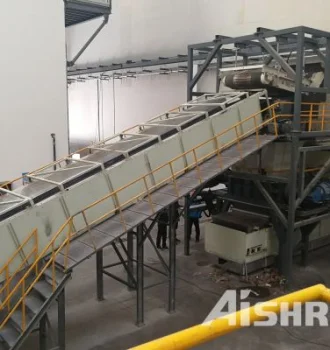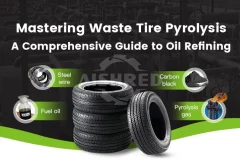
Discover the process of waste tire pyrolysis and oil refining. Learn how thermal cracking transforms tires into valuable resources like tire oil, carbon black, and pyrolysis gas. Explore different technologies, benefits, and applications for sustainable recycling solutions.
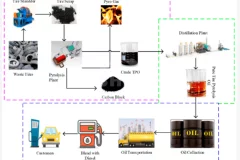
Tire pyrolysis and oil refining is a process of converting waste tires into valuable substances through pyrolysis technology. So what is the overall process like? Let's learn about it together, and see what GEP ECOTECH says.Firstly, Pre-treatmentRemove metal parts, large debris, etc. from waste tires to prevent equipment damage and improve operational efficiency. For continuous production lines, it is also necessary to shred waste tires into rubber chips or grind them into rubber powder.Secondly, FeedingBy manual or mechanical means such as screw feeders, hydraulic feeders, lifting winches, the pre-treated tires or rubber powder are fed into the pyrolysis furnace and the furnace door is closed to ensure high-temperature heating in a sealed environment.Thirdly, Pyrolysis ReactionHeating the pyrolysis furnace under anaerobic or hypoxic conditions, at a certain temperature and pressure, causes the rubber and organic matter in the tire to undergo pyrolysis. The general temperature control is between 160℃ and 700
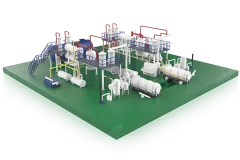
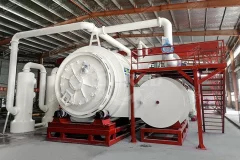
Tire Pyrolysis System
2025-01-13Tire pyrolysis systems offer a comprehensive and high-level recycling solution for end-of-life tires by using high temperatures in a low-oxygen environment to decompose rubber into valuable byproducts such as tire pyrolysis oil, pyrolysis gas, and carbon black. The system typically consists of a reactor (kiln), oil-gas condensation equipment, and a flue gas purification device. Pre-treatment systems may be required in some cases to process tires into suitable sizes.GEP ECOTECH offers two types of tire pyrolysis systems: batch systems and continuous systems. Batch systems are ideal for smaller-scale operations and applications requiring high flexibility, capable of processing whole tires directly. They offer lower initial investment costs and simpler operation. Continuous systems, on the other hand, are designed for large-scale, continuous production, achieving maximum conversion efficiency with pre-treated rubber powder. They offer higher throughput and automation but require a larger initial investment.GEP
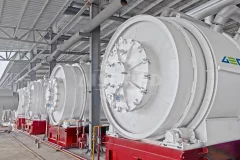
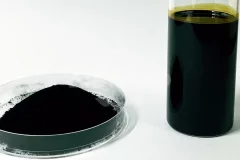
Tire pyrolysis oil refining has become increasingly popular due to its simplicity and high profitability. Many tire recycling companies are adopting or exploring this technology as it not only generates valuable oil from waste tires but also reduces environmental impact. Its flexibility to integrate seamlessly with existing recycling lines makes it an efficient choice for production expansion. Additionally, the process helps lower dependency on fossil fuels by creating alternative energy sources, aligning with global sustainability goals.Price of Tire Pyrolysis Production LineWhen it comes to tire pyrolysis oil refining systems, the cost is a major concern for both newcomers and experienced recyclers. However, the price can vary significantly depending on the system's configuration and capacity. To help you better understand, let’s explore the different types of pyrolysis systems and their general price ranges.Batch-Type Pyrolysis SystemThe batch-type pyrolysis system is the go-to choice for most entry-level
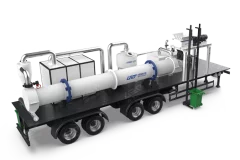
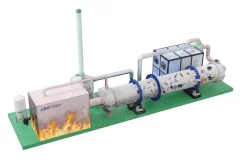
Portable Pyrolysis Plant
2023-09-13Pyrolysis Plants use high temperatures to decompose organic matter for the purpose of reduction and recycling. Unlike large-scale waste pyrolysis facilities, portable pyrolysis plants are primarily designed for small and medium-sized projects, aiming to address the issue of waste transfer and pollution. They feature a compact design, easy mobility, and simple installation, allowing for quick deployment into operational mode.They can handle various wastes including municipal solid waste, medical waste, agricultural and forestry waste, biomass, rubber tires, plastics, sludge, etc. The resulting products include combustible gases, fuel oil, carbon black, ash, and more.Portable Pyrolysis Plants have excellent economic efficiency. The combustible gases generated during their operation can provide heat for the continuous operation of the system. Excess gases, fuel oil, and carbon black, among other products, can be sold as commodities.GEP ECOTECH's portable pyrolysis solution is developed based on years of


